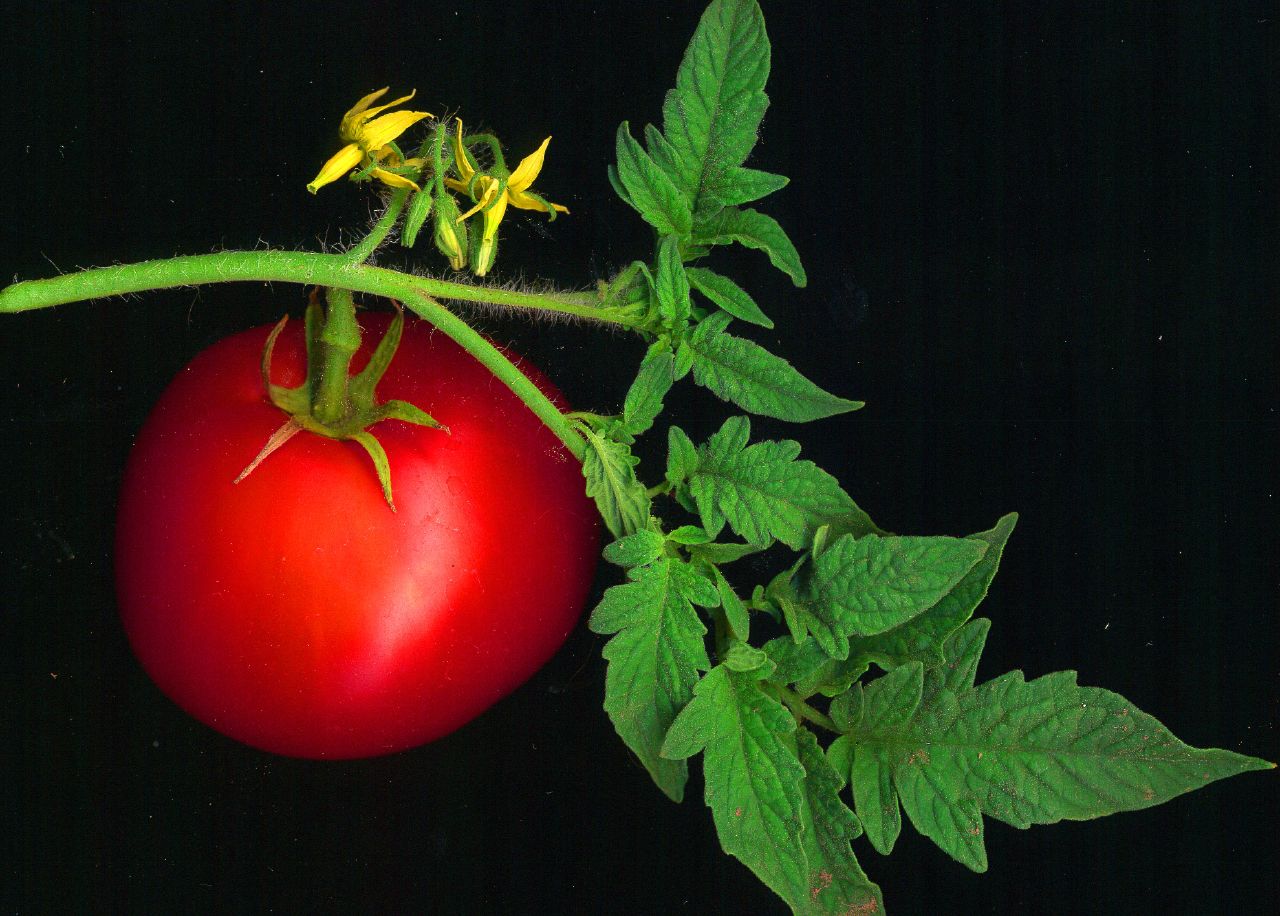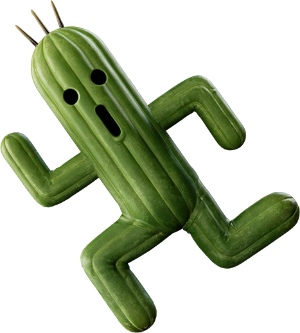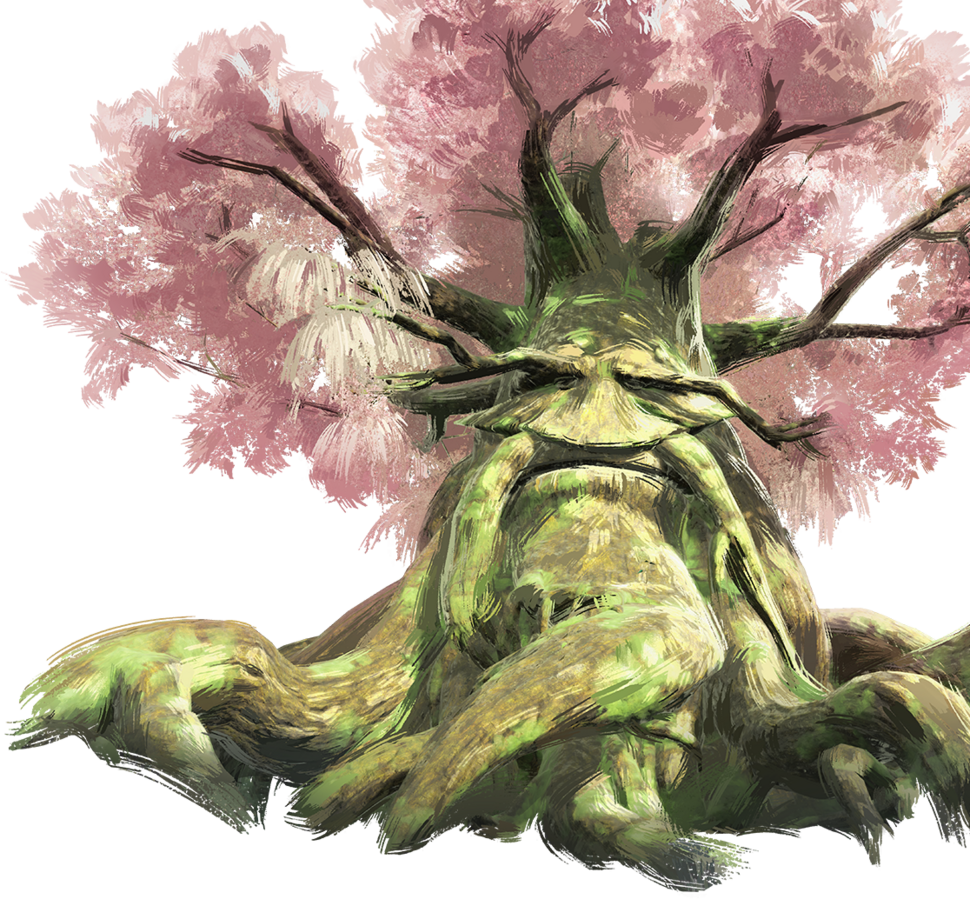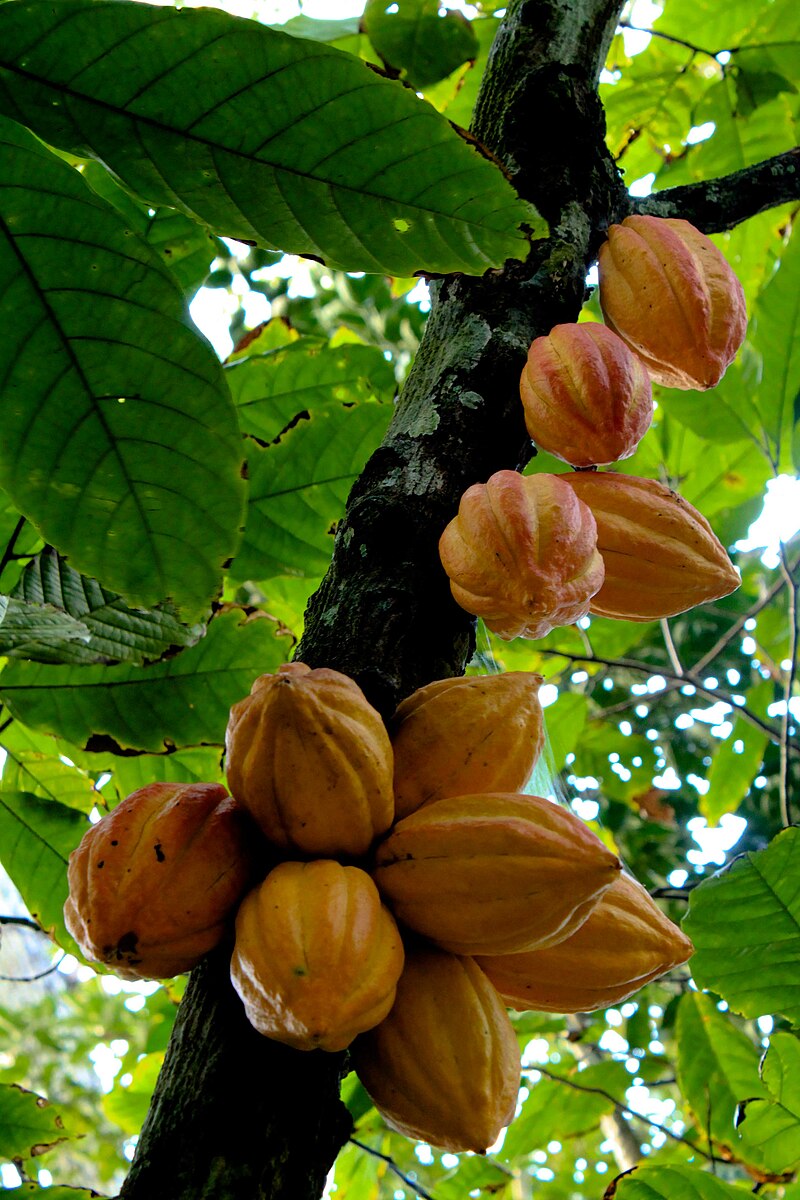I used to never like this tuber when I was kid, but I'm willing to give it a second chance. Putting it above rice is questionable though.
#27 (tie)
Sweet Potato
The sweet potato is actually a very different plant from that other potato, in a whole different Family. In fact, it's most closely related to Morning Glories, which becomes obvious if you happen to see them as plants in bloom - they're almost indistinguishable above ground. The sweet potato is a perennial vine which can grow year-round in the tropics, but has to be harvested before first frost in temperate climates. Its closest wild relatives have relatively thin, barely-edible roots, so we can once again thank natives of Central America who domesticated and bread the sweet tubers we know today well over 5000 years ago. It spread from there to South America, the Caribbean, and even Polynesia all the way to New Zealand long before the age a Western exploration - a fact which supports the idea that Polynesian sailors made contact with the Americans before Europeans got there.
Later on of course they were introduced to pretty much the entire rest of the world, and quickly became an important staple in far-flung regions due to their hardy nature and high nutritional content. Although they have slightly less energy density than cereals like rice and corn, they have considerably more nutrients, especially Vitamins A, C, B6, manganese, potassium and so on, in addition to plenty of dietary fiber. Dried slices of sweet potato are a staple in Uganda, baked whole tubers are a street food in Egypt and China, they're a common tempura ingredient in Japan, and a component of cellophane noodles and candied slices in Korea. On All Saint's Day in Spain they serve roasted sweet potato and chestnuts, they're served alongside ceviche in Peru, and made into a hard sweet jelly in Argentina. They're distilled into a spirit, Imo Jōchū, in Japan, put in salad in the Philippines, and made into a pastry in Taiwan. And of course in the US we have sweet potato casserole, sweet potato pie, and sweet potato fries.
It's just good eatin'!
-
Welcome to Talking Time's third iteration! If you would like to register for an account, or have already registered but have not yet been confirmed, please read the following:
- The CAPTCHA key's answer is "Percy"
- Once you've completed the registration process please email us from the email you used for registration at percyreghelper@gmail.com and include the username you used for registration
Once you have completed these steps, Moderation Staff will be able to get your account approved.
You are using an out of date browser. It may not display this or other websites correctly.
You should upgrade or use an alternative browser.
You should upgrade or use an alternative browser.
Lean, Green, and Making the Scene(ry) - TT's Top 50 Plants
- Thread starter Kirin
- Start date
-
- Tags
- obvious plant top 50

#25
Pumpkin
Species: Cucurbita pepo pepo
Habitat: domesticated since ancient times in North and Central America
AKA: winter squash, kabocha
Fun stat: the world's heaviest recorded pumpkin weighed 2,703 lb
Points: 68, Votes: 3, Highest: Lady
There is no scientific definition for what counts as "a pumpkin". They're generally from that one species of winter squash, and usually large and round, and often orange but definitely not always because there's things called pumpkins in several other colors, and sometimes they're small, and sometimes they're those literal-ton monstrosities, though the record-breaking ones are actually a slightly different species, and you also can't say all of the Curcubita pepo species is pumpkins because you know what's that exact same species? Frikkin' zucchini. (Oh, and as previously came up, it's also.. technically a berry!)
*breathes*
Anyway, we generally know a pumpkin when we see one, and the pumpkin we know today is once again thanks to domestication and breeding by natives of central and north America well over 5000 years ago - though the variety of winter squash most commonly used as one of the "three sisters" planted together with maize and beans was generally smaller than our carving pumpkins, whose considerable bulk could damage neighboring crops. And since one of these votes was actually for jack-o-lanterns I'll say that the canonical cultivar associated with Halloweeny goings-on is the Connecticut Field Pumpkin, which itself dates back to the 16th century.
The US grows a whole lot of those pumpkins - 1.5 billion pounds in 2017, with the state of Illinois being the largest producer by far. Many are sold whole for Halloween but much of the crop is sold for food - roasted, canned, pureed, made into pumpkin pie or soup. You can also of course eat the seeds roasted, and pumpkin flowers are commonly eaten either as a garnish or fried in the southwestern US and Mexico.
Fuck I forgot pumpkins

#24
Peanut
Species: Arachis hypogaea
Habitat: originated in tropical and subtropical regions of South America
AKA: Groundnut, Goober, Pindar, Monkey Nut
Points: 72, Votes: 3, Highest: gahitsu
As you probably know, the peanut is not really a nut, but a legume in the same family as peas and beans. It has a very unusual feature in the plant kingdom known as geocarpy where seed or fruits are grown underground. After bright yellow-orange flowers bloom for a single day, each ovary send down a shoot called a "peg" into the soil where the peanut pods develop. While botanically they're a seed, basically a bean, culinarily they have a similar taste and nutritional value to tree nuts.
For the domesticated peanut, we yet again owe thanks to native Central and South Americans, probably well over 8000 years ago. It was well known through main Mesoamerican cultures, and Spaniards found them for sale in Aztec marketplaces when they arrived. It wasn't farmed in Europe until the 19th century, but was then quickly spread by traders and became an important mainstay in many parts of Africa and Asia. In the US, George Washington Carver famously promoted the peanut as a crop in the South, where it helped revitalize fields that had been depleted by years of growing only cotton. Peanut Butter was developed in the US in the 1890s, and was not well known until after the 1904 World's Fair in St. Louis.
Like some other legumes, peanuts pack a lot of nutritional value in a small package, including plenty of protein, unsaturated fats, and fiber, plus B and E vitamins, manganese, magnesium, and phosphorus. They are used worldwide in an enormous variety of dishes. About 0.6% of the population, however, develop a severe allergy to peanuts which then become a serious health hazard even in very small doses.
Violentvixen
(She/Her)
I had squash on my list but not pumpkins, pumpkins are great to eat.
Peanuts are great, oddly I mentioned peanut butter in the writeup for a different plant but didn't think to list peanuts themselves.
Peanuts are great, oddly I mentioned peanut butter in the writeup for a different plant but didn't think to list peanuts themselves.
Johnny Unusual
(He/Him)
Since the current list hit 25, submissions are open for the next list!
Capsize the Vote! The Popularity Contest General and Nomination Thread
"Top 50 items you forgot to submit to a top 50 list"
talking-time.net

#23
Tomato
Species: Solanum lycopersicum
Habitat: native to western South America
Fun stat: the name "tomato" comes very directly from the Nahuatl (Aztec) word, tomatl
Points: 73, Votes: 3, Highest: Daikaiju
I'm getting some serious deja vu here - we've got another technical berry, another nightshade, and another food originally domesticated by native central American peoples, though this time it started with the Aztecs only 2500-odd years ago, so it's a relatively more recent invention than things like pumpkins, sweet potatos, and chili peppers. (After reading up on all these things I really want to go shopping in an Aztec market, sounds like they had a huge variety of good stuff!) The Spanish of course immediately stole it and after a period of suspicion due to its relationship with belladonna and its high acidity that reacts badly with pewter tableware, it was widely adopted into local cuisines across Europe in the 17th and 18th century, especially in Spain and Italy as it thrives in a Mediterranean climate.
Apparently a lot of the sweetness and flavor of older tomato varieties was bred out of commercial cultivars in the 20th century, not just due to concerns such as plant yield, shelf life, and hardiness to transport, but also in search of a 100% bright red fruit as opposed to one that had greenish shoulders. Modern tomatoes look pretty but flavor-wise are a shadow of their former selves. Some researchers are now turning back to wild tomatoes in an effort to cross-breed beneficial flavor and nutrition traits back in to commercial tomatoes.
Tomatoes also seem to be a source of low-stakes controversy. For one thing there's the fruit/vegetable dichotomy - botanically a fruit but culinarily a vegetable - which actually matters occasionally when it comes to things like taxes and tariffs. Apparently the state of Arkansas officially took both sides when it named the South Arkansas Vine Ripe Pink Tomato as the state fruit and the state vegetable. And then there's the pronunciation - toMAYto, toMAHto - which is so famous there's a song about it, and it's become shorthand for trivial disagreements.

#22
Corn / Maize
Species: Zea mays
Habitat: native to southern Mexico
Fun stat: Only Americans and Australians call it corn, everywhere else (and in science and botany) it's Maize
Points: 74, Votes: 4, Highest: Torzelbaum
We've talked about a lot of crops from Central America but this one is the grand-daddy - corn is descended from a strain domesticated in southern Mexico about 9000 years ago. Spreading through most of central and south America over the next couple thousand years, it became central to the diets and cultures of the Olmec, Maya, and Inca civilizations. Soon after the Columbian Exchange got going it became a staple in much of Europe.
One thing it took the Europeans a moment to realize, though, is that corn is missing some key nutrients (notably niacin, the lack of which causes the disease pelagra) unless it's processed in a way the makes them bioavailable. This was done since ancient times in the Americas through the process of nixtamaliztion (from an Aztec word, which is why it's so hard to say). You soak and cook the kernels in an alkaline solution, usually limewater, which softens them and makes the hulls easier to remove, but as a side effect also greatly increases the nutritional value, reduces toxins, and increases the flavor and aroma. Corn processed this way is used to this day for tortillas, tamales, and hominy grits.
Today Corn is the second largest crop in the world by weight (behind only sugarcane) with an annual production of over a billion tons. The US produces almost a third of that total. In addition to its many culinary uses - as corn on the cob, cornmeal, cornstarch, corn syrup, corn oil, polenta, grits, etc etc - its also a major source of animal feed, a starch source for plastic and fabrics, and a biofuel for heating or ethanol fuel.
And of course you can distill it into Bourbon Wiskey - aged in Oak casks, for a Top 50 crossover!
Pretty!ViolentVixen said:Shoutout to Glass Gem corn, one of the first things I grew in my garden once I had one https://www.nativeseeds.org/products/zp103?variant=37953899397274



#21
Cactuar
AKA: Sabotender, Cactrot, Cactuer, Cactoid, Kactuar, Qactuar
Habitat: favors deserts on many worlds
Fun stat: Apparently Alexander O Smith saved us from the literal translation "It ejaculates needles!"
Points: 76, Votes: 3, Highest: Kirin
Cactuars are a family of sentient cactus-like creatures found across many worlds. Though many are somewhat frail, they are all extremely fast and extremely evasive, and often possess very high resistance to magic as well. Their first instinct when threatened is usually to run away, but when cornered some are known to kick, while others will fire off 100, 1000, or even 10,000 needles at their attackers, making them quite dangerous to confront.
Despite the danger, cactuars are frequently targeted by hunters and adventurers for the resources they contain, which may include unusually large amounts of XP, AP, or even currency, depending on the variety in question. Some are also topped with flowers that are prized ingredients for potions or other alchemical uses.
While most cactuar populations show only minor variations from the standard build, a few have adapted to their environments with significantly different looks. On a few worlds, enormous King or Jumbo Cactuars have developed - curiously these often sport a stylish mustache. One or two worlds have shown signs of emerging cactuar cultures or civilizations.

In our world, we have Tetsuya Nomura to thank for the cactuar design, which was reportedly adapted from a doodle in a high school notebook. Since their first appearance in FFVI (as Cactrot in the English version) they've appeared in nearly every numbered Final Fantasy and numerous spin-offs, and in a range of other crossovers including Mario Hoops, Dragon Quest X, Monster Hunter World, Lord of Vermillion, Hanjuku Hero, and even in an Assassin's Creed game (as a statue on someone's modern-day desk).
Look at those goofy fuckers

#19 (tie)
Great Deku Tree
Species: tree deity
Habitat: forests of Hyrule through the ages, notably Kokiri Forest, Forest Haven, and Korok Forest
AKA: Earth Spirit, Guardian of the Forest, Grandpa
Fun fact: apparently in French it's a Mojo Tree
Points: 81, Votes: 3, Highest: Adrenaline
The Great Deku Tree is a forest deity in the form of an enormous tree that has appeared repeatedly throughout Hyrule's history (or across its various timelines, we're not getting into that whole semantic mess). Although it cannot leave the place where it's rooted, it is capable of speech and limited movement. It's size is such that and entire village or dungeon may be found within it.
It is usually seen as a guardian of the forest, but may also be instrumental in protecting all of Hyrule via aid or advice given to various incarnations of the hero Link and princess Zelda. It often guards a precious artifact with a connection to the Goddesses of Hyrule, be it a spiritual stone or the Master Sword itself.
The Deku tree is known to undergo a cycle of rebirth; when it is threatened or dying it will create a Deku Sprout which is destined to become the next Great Deku Tree, though its growth may take many generations. The Deku Tree is also said to be the progenitor of the creatures or peoples residing in its forests, notably the Kokiri and the Koroks, though this relationship may be more metaphorical than literal.

the whole opening sequence of Ocarina of Time through the Deku Tree dungeon is maybe the most consequential gaming moment of my life

#19 (tie)
Cannabis / Hemp
Species: Cannabis sativa
Habitat: native to central Asia, probably around the Himalayan foothills
AKA: Marijuana, Bhang, Charas, Dagga, Ganja, Hashish, Má, Acapulco Gold, Bud, Weed, Grass, Herb, Mary Jane, Kief, Maui Waui, Thai Stick, 420, Bobo Bush, Butter Weed, Cabbage, Chronic, Crazy Weed, Devil's Lettuce, Doña Juanita, Green Goddess, Holy Weed, Jazz Cabbage, Laughing Grass, Loco Weed, Magic Dragon, Pakalolo, Righteous Bush, Sinsemilla, Skunk, Space Cake, Wisdom Weed, Whacky Tabacky, .....
Fun fact: As if the above weren't enough, the USDEA also claims "Smoochy Woochy Poochy"
Points: 81, Votes: 3, Highest: Purple
Cannabis is an annual flowering herb with a name that varies based primarily on its usage - plants grown for a wide variety of non-drug uses are known as hemp, while ones grown for medical and recreational use are known as marijuana as well like 1200 slang terms and 2300 names of individual strains. It's even a bit up in the air whether the genus is all a single species with different varieties or up to three separate ones - particularly sativa and indica may or may not be the same species - but the common nomenclature is so dominated by inexact drug terms that things get a bit confusing. Cannabis' closest relative in the plant kingdom is the hop plant used for making beer.
Cannabis is another ancient crop, domesticated around 12000 years ago in East Asia during the later part of the Stone Age. It has been used in China since before recorded history and was used by Daoists in incense burners. It was also known to the ancient Greeks and Romans, who probably got it from the Scythians. It also spread through Islamic empires, and was eventually used by the Spaniards for fiber in their colonial period.
The cannabinoid chemical compounds that make the plant interesting evolved as a defense against insect predation and disease, but in humans they tend to cause relaxation and mild euphoria, and in addition to recreational use they can also be effective reducing nausea and vomiting, increasing appetite, and treating chronic pain.
Cannabis also contains an abundance of durable soft fiber in its stalks; this hemp fiber is useful for everything from paper, rope, textiles, and clothing, to biodegradable plastics, insulation, and construction materials. The seeds are also used for their oil and the whole plant can be used as a biofuel source. It's especially attractive as a renewable source of raw materials because it is, alongside bamboo, one of the world's fastest growing plants.
I agree that weed is equal in value to the Great Deku Tree
Going back quite a few entries:
The pepper seeds / fruits are processed in different ways to make different types of pepper:
But pink peppercorns are not from the same plant:
And on an interesting side note - did you know that papaya seeds can be used as a substitute for black pepper?
I didn't put chili peppers on my list but I do have an interesting related fact about spicy plants:
People aren't the only (non-bird) mammal that chooses to eat spicy plants. There is a species of treeshrew (Tupaia belangeri chinensis) that eats a type of pepper (Piper boehmeriaefolium) that has a capsaicin-like compound.

 www.australiangeographic.com.au
www.australiangeographic.com.au
I'm not entirely sure why I put black pepper at #2 but I do find it interesting how it has spread across the entire world as a foundational part of almost all cuisines.#43 (tie)
Pepper
So I gotta admit a slight goof here, but I'm not rearranging the list at this point. What happened here is that we had a vote for Black Pepper and a vote of Shishito Pepper and they got grouped together on the spreadsheet, but... I'll just let wikipedia say it:
Welp. This entry is for spicy things that we happened to give the same name.
Both black peppers and capsicum peppers obviously have innumerable culinary uses worldwide and are a key flavor in many national cuisines. Calling back to last week's discussion, the fruit-shaped Bell and Chili peppers of Capsicum are actually technically berries, while the small, round peppercorns of of Piper are technically the seeds of tiny drupes or stonefruit, like a peach.
The pepper seeds / fruits are processed in different ways to make different types of pepper:
Peppercorns and the ground pepper derived from them may be described simply as pepper, or more precisely as black pepper (cooked and dried unripe fruit), green pepper (dried unripe fruit), or white pepper (ripe fruit seeds).
But pink peppercorns are not from the same plant:
Pink peppercorns are the fruits of the Peruvian pepper tree, Schinus molle, or its relative, the Brazilian pepper tree, Schinus terebinthifolius, plants from a different family (Anacardiaceae). As they are members of the cashew family, they may cause allergic reactions, including anaphylaxis, for persons with a tree nut allergy.
And on an interesting side note - did you know that papaya seeds can be used as a substitute for black pepper?
I didn't put chili peppers on my list but I do have an interesting related fact about spicy plants:
People aren't the only (non-bird) mammal that chooses to eat spicy plants. There is a species of treeshrew (Tupaia belangeri chinensis) that eats a type of pepper (Piper boehmeriaefolium) that has a capsaicin-like compound.

Treeshrews love spicy food and can’t get drunk
Many humans gravitate towards food that has a kick, but this is (understandably) a complete anomaly in the animal kingdom.

#18
Cacao
Species: Theobroma cacao
Habitat: native to tropics of the Americas
AKA: Cocoa Tree
Fun stat: "Theobroma" is Greek for "food of the gods"
Points: 82, Votes: 3, Highest: Torzelbaum
Cacao is a small tree in the Mallow faily that grows in the understory of humid forests. It is, of course, known mainly for the seeds of its fruit, which are the main ingredient of chocolate.
Cacao was domesticated over 5000 years ago somewhere in the vicinity of Peru or Ecuador, and was important to many Mesoamerican civilizations. Its common name comes from the Mayan kakaw and Aztec cacahuatl. It was so valued by the Aztecs that it not only served as a ritual drink but also as a currency - 100 beans could buy you a fancy new cape, and the empire received a yearly tribute of over seven million beans from its outlying territories. Both Maya and Aztec mythologies include Cacao being bestowed upon humans by divine serpent gods.
Europeans first gained knowledge of the plant and the drink from Emperor Moctezuma himself, who reportedly consumed it in large quantities whipped up by his servants. Dude evidently had a raging habit for fancy mochas. The drink was a hit at the Spanish court and quickly spread to the rest of Europe.
The pick-me-up of chocolate comes from the chemical Theobromine, a stimulant with a very similar structure to caffeine (some of which is also present in the beans). It also lends chocolate its pleasantly bitter taste.
Johnny Unusual
(He/Him)
I stayed away from edible plants for the most part but can't deny this one.
I had Super Mushroom at #9. It's just such an iconic part of the Mario franchise.
I had peanut at #10.
I didn't have tomato on my list. I like it well enough but not enough to put in my top 25. However I have talked about it before and covered some of the same things that Kirin mentioned:
I had corn at #6.
I don't have much to say about it but if you want to get a good idea of how much people change plants through domestication then look at this comparison of teosinte (corn's wild ancestor), a corn-teosinte hybrid and modern corn.

I had Cactuar at #12 on my list. They are a worthy opponent but can also be an invaluable ally.
Kirin mentioned some of their appearances but didn't include Dragon Quest Tact:


I had cacao at #4.
I had peanut at #10.
I didn't have tomato on my list. I like it well enough but not enough to put in my top 25. However I have talked about it before and covered some of the same things that Kirin mentioned:
Tomatoes are a member of the nightshade family and when first introduced in Europe they were regarded with suspicion by some people/countries. That suspicion was reflected in one of the common names for it - wolf peach. (Which still remains in the species name for tomato - lycopersicum.)
I had corn at #6.
I don't have much to say about it but if you want to get a good idea of how much people change plants through domestication then look at this comparison of teosinte (corn's wild ancestor), a corn-teosinte hybrid and modern corn.

I had Cactuar at #12 on my list. They are a worthy opponent but can also be an invaluable ally.
Kirin mentioned some of their appearances but didn't include Dragon Quest Tact:


And you mentioned quite a few of those slang terms but not reefer.Cannabis is an annual flowering herb with a name that varies based primarily on its usage - plants grown for a wide variety of non-drug uses are known as hemp, while ones grown for medical and recreational use are known as marijuana as well like 1200 slang terms and 2300 names of individual strains.
I had cacao at #4.

